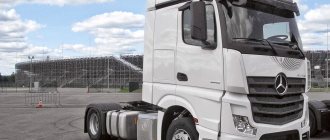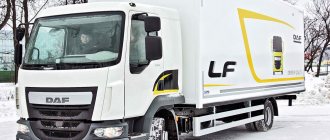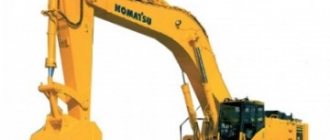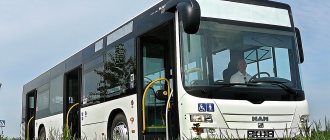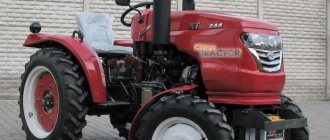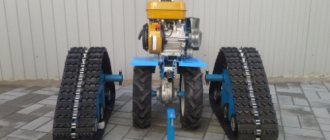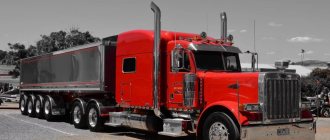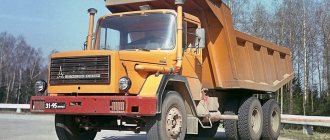Alexey Starikov, photo by the author
Ranking tenth in the world in terms of population (127 million people) and 61st in area (372.8 thousand km2), Japan for many years has held an honorable second place in terms of production of all types of commercial vehicles in the world, second only to the United States.
According to the Japan Automobile Manufacturers Association (JAMA), in 2014, 1,308,177 trucks of all types and 132,681 buses were produced in the country. Moreover, more than half of the trucks are small and ultra-small K-class vehicles, which in other countries are considered cars.
The fact is that the classification of commercial vehicles in Japan is based on its own approach and is not used practically anywhere else. All trucks are divided into three categories: Mini, Small and Standard. The latter includes two familiar classes of trucks: medium and heavy, which are not separated in Japan. Small class Small – these are analogues of our “GAZelles” and “Bychkov” with a carrying capacity of up to 3 tons. But the smallest Mini class is practically not produced here, but is known as an import (for example, Uzbek Daewoo Damas). Their carrying capacity starts from 150 kilograms. The engines are almost identical - petrol 3-cylinder with a volume of up to 660 cm3 and a power of up to 49 hp.
These parameters are not accidental - these vehicles are subject to reduced taxes. For ease of maneuvering on the narrow streets of megacities, they are short and narrow, only 1.2–1.3 m wide. They are used not only in the form of closed vans, but also with flatbeds, isothermal bodies and in the form of dump trucks. In the latter case, their rear wheels with a landing radius of 10 inches are equipped with drum brakes.
The program of large Standard machines from all manufacturers is also unusual due to the peculiarities of local legislation. The overall length is limited to 12 meters (the same for buses), the total weight is 25 tons. Such single vehicles, including 4-axle ones, make up the majority on Japanese roads. The total weight of a trailed road train is limited to 36 tons, the overall length is 16 m. There are also trucks with a 6x2 wheel arrangement, with two steering axles located at the front.
At the same time, Japan does not have the specialization of production characteristic of other countries. Trucks from different companies have similar characteristics and wheel configurations. And in general, they are almost the same - cabover cabs with a large glass area, a simplified interior and an abundance of electronic control systems. Characteristic features of all companies are the preservation of their own names for cars of different classes and more advanced performance for the domestic market.
BY NAME
Over the past forty years, trucks in Japan have been represented by seven brands: Hino, Isuzu, Mazda, Mitsubishi Fuso, Nissan, Toyota and UD (this does not take into account special equipment from Hitachi, Komatsu, MHI, Kato, the Japanese division of Caterpillar, etc.). For a long time, the influence of the American school was clearly visible in the range of medium-duty and large-tonnage trucks, since the production of trucks in Japan after World War II was based on developments in the USA, England and Germany. Thus, until the mid-1970s, most Japanese cars had a hood layout interspersed with their own design.
The largest of the Japanese truck manufacturers (and the only one that remains independent) today is Isuzu. The company's production has grown steadily over the past twenty years, allowing it to become a market leader. She stood at the origins of Japanese truck engineering. Through a series of mergers in the 1930s, the company produced a line of trucks and buses under the Sumida brand. At the same time, they created their own air-cooled engine based on a licensed German Deutz. The name (after the river of the same name) has been known since 1934, when the production of army trucks began under this brand. After World War II, Isuzu received a large order from the Pentagon to produce 2.5-ton standard chassis. By the way, the company still remains one of the main suppliers of equipment for the self-defense forces.
The basis for the civilian range was the appearance in 1959 of the first generation of the lightweight Elf family, which is still being produced in its eighth generation. In 1971, General Motors became a co-owner of the company, which made it easier for it to enter the North American market. Around the same years, the company attempted to enter the Soviet market. However, this did not bring great results; only deliveries of small batches of dump trucks began for the Far Eastern region.
By the end of the 1990s, Isuzu's production program included three families of cabover vehicles - Elf, Forward and Giga. The company has also achieved great success in the development of diesel engines, being one of the world leaders in this segment. Today the company is part of the Hitachi concern and owns 15 factories around the world, producing cars under the brands Isuzu, Chevrolet, GMC, Bedford, Opel and Mazda.
By the way, Mazda still has several poorly liquid truck joint ventures abroad, where they produce Titan trucks of older series, but in general Mazda is now producing pickup trucks.
The second place in terms of production volumes is occupied by the products of one of the oldest Japanese engineering concerns - Mitsubishi Motors Corporation. Its history is in many ways similar to that of Isuzu. The first commercial vehicles were produced in 1918. Since 1932, the name Fuso has been known, which first appeared on buses of this brand. In 1963, the first lightweight Canter appeared; Now their 9th generation is being produced. And in 1970, part of the shares of MMC was bought by the American Chrysler. By this time, the company is a leader in the production of all types of commercial vehicles.
At the same time, Mitsubishi products entered the Soviet Union for the first time - bonneted timber trucks of the NW series with a 6x6 wheel arrangement. But another class of machines has become the most common in our country - Kato crane units on special chassis manufactured by Mitsubishi Heavy Industries.
Light vehicles, including vans and pickups, are positioned under the brand of the parent company. Commercial vehicles - like Mitsubishi Fuso. In the last few years, the Japanese and some foreign markets have not used the Mitsubishi name on trucks. The light series with a lifting capacity of up to 3 tons is named Canter (previously in Japan - Fighter Minion), the medium series - Fighter. The heavy series was previously called Great, since the late 1990s - Super Great; It is supplied to some markets under the name Shogun.
Now the corporation owns 9 factories in Japan and assembly plants in 27 countries. The Mitsubishi Fuso brand itself belongs to the Daimler AG concern.
The third Japanese manufacturer of commercial vehicles is Hino. It separated from Isuzu back in 1942. Since 1967, it has been a division of Toyota, which also includes Daihatsu. Initially, this company focused its efforts on the production of diesel engines. Thus, it was she who first began to use diesel engines with turbocharging and intermediate cooling of the charged air (EconoDiesel Intercooler series) in her cars.
During the recession of the 1990s, Hino assembled passenger cars for its parent company, producing 250,000 Toyota Hi-Lux N50 series pickups. At the same time, she was one of the first to organize joint ventures in China and Vietnam.
The modern program includes classic cabover trucks of all classes. The light class is named Dutro (formerly Ranger). Mid-class cars are now called Ranger (formerly Space Ranger); heavy – Profia. Especially for the American market, Hino produces the only Japanese mid-range bonnet model, the Hino 600, at its plant in West Virginia.
Toyota Motors Corporation has moved somewhat away from using its brand in its truck program. The production program retains the Dyna series (the same Hino 300), which is sold under the names Toyota Toyoace and Daihatsu Delta, and continues to produce cargo and passenger multi-stops for mail and courier delivery services, chain stores and nursing homes.
The smallest company in terms of truck production in Japan belongs to Nissan, and for a long time was called Nissan-Diesel. Two years ago it was returned to its historical name UD. Its history began in 1935, when the private company Minsei acquired a license to produce engines from the German Krupp. In 1953, Nissan bought the company. The proper name of those diesel engines, Uniflow Diesel, was inherited and remains in the form of an abbreviation on the front fascia to this day.
Nissan-Diesel also had experience of cooperation with the USSR. Since the early 70s of the last century, all-wheel drive KNWF bonneted timber trucks with a lifting capacity of 29 tons with engines manufactured by the Japanese Komatsu have been supplied to the Far East. Later they were replaced by the updated UZ hood series.
The range of trucks that has been formed to date includes vehicles of all classes, ranging from light 4x2 delivery vehicles to heavy crane chassis with a lifting capacity of 150 tons and a 12x8 wheel arrangement. The series of light vehicles is named Condor (Canter), the medium one is Condor FK, and the heavy one is Quon (previously called Big Thumb). A year ago, a new series of heavy export vehicles, Quester, was presented. UD, having formed an alliance with Renault in 1991, is now owned by Volvo Trucks.
Suzuki, Mazda, Subaru, Honda and Isuzu: progressive truck manufacturers
All the presented manufacturers are united by one fact - they began serial production of their own trucks in the 60s and 70s of the last century. At the same time, these companies quickly gained popularity and began to actively export their products. The success of Japanese trucks Suzuki, Mazda, Subaru can be explained by the reliability of the assembly, the presence of useful electronics in the cabin, a spacious cargo compartment and a high-torque power unit capable of producing 150-200 hp. Honda and Isuzu, according to many drivers, combine the best price/quality ratio, are equipped with a convenient manual transmission and increased ground clearance.
Thus, Japanese trucks will be an excellent choice for those who value, above all, unpretentious operation and recognized reliability of vehicles that can quickly deliver cargo over any distance.
JUNIOR
The lightest Mini class includes models developed specifically for Japan and produced by passenger car concerns. Some of them are ordinary passenger cars of a particularly small class in 2-, 3- and 5-door configurations with dismantled rear seats (for example, Toyota Corolla, Nissan Sunny). But besides them, there is a special class, originally developed as commercial products. Badge-engineering is very popular in this class - the same cars have different names. Nissan Clipper is also sold as Mitsubishi Minicab, Suzuki Every is sold as Mazda Scrum. Similar cars are produced by Subaru, Daihatsu (including Toyota versions) and Honda.
This class also includes mid-size vans with a carrying capacity of up to 1200 kg, which are also known here: Toyota Hi Ace, Nissan Caravan (Urvan) and others.
LUNGS
This most common range of trucks in Japan makes up up to half of the total vehicle fleet, having a number of features.
Firstly, developed cooperation is unusual for other countries. It is not surprising, given the common owner, that the Toyota Dyna - Hino Dutro - Daihatsu Delta line is unified. But the situation with other manufacturers is unique. For example, Isuzu, in addition to its wide range of Elf and export brands Reward, Chevrolet, GMC, as mentioned earlier, also assembles cars under the Mazda Titan, Nissan Atlas and UD Condor brands.
Secondly, some cars of this class, mainly operating in megacities, are equipped with engines running on alternative fuels. In addition to compressed gas (CNG) or liquefied gas (LPG) engines, hybrid and diesel-electric engines are used.
In addition, light trucks use an unusually large range of cabin widths. Different versions of the Isuzu Elf alone are called single, standard, high, wide, narrow.
FATAL
Since there is no clear distinction between medium and large trucks in Japan, the heaviest versions of the medium Hino Ranger, Isuzu Forward and MMC Fighter belong to the heavy class according to the generally accepted classification. In both classes, in addition to manual transmissions, automatic ones are widely used.
The middle class mainly includes models with a carrying capacity of 4 to 9 tons and a length of up to 9 meters. However, some vehicles have a lower load capacity (especially all-wheel drive models), and some models have a maximum length of 11,990 mm. Moreover, the carrying capacity of such machines is less than 5 tons.
Among large-class vehicles, each company has single models with a carrying capacity of up to 16,300 kg with a 6x4 or 8x4 wheel arrangement. To maximize the use of useful volume, they are equipped with an adjustable air suspension of the rear axles with 4 cylinders per axle, as well as wheels with a smaller landing radius. As a result, the height of the platform above ground level is 970 mm. Models with a minimum overall length are used for installing dump bodies or concrete mixers.
A few words about local truck tractors. Heavy two-axle tractors are designed with some reserve for a legally permissible weight of 16 tons. There are also versions of middle-class tractors - for transporting lightweight cargo. Three-axle vehicles are used for transporting heavy construction equipment, and therefore are designed for a total weight of a road train of up to 80-plus tons.
Some time ago, repeated attempts were made by European concerns to break into the local market. However, all of them were unsuccessful, despite the complete absence of import customs duties. Volvo FH tractors are relatively successful. Mercedes has completely stopped selling its heavy vehicles here, as has Scania, despite its joint venture with Hino.
The best Japanese trucks
Details Category: News Published 05/28/2019
The Japanese auto industry deservedly enjoys high prestige throughout the world, both among private car owners and among the professional community of motorists and auto repair specialists. Japanese trucks, as well as cars, are rightfully considered the best in terms of affordable cost and fairly high quality.
The meticulousness of the Japanese in working on the design and production of trucks is comparable to their German colleagues, but at the same time, the prices of even the best Japanese trucks are significantly lower than their counterparts from Germany. This was the main reason for the widespread popularity in our country and around the world of trucks made in Japan.

